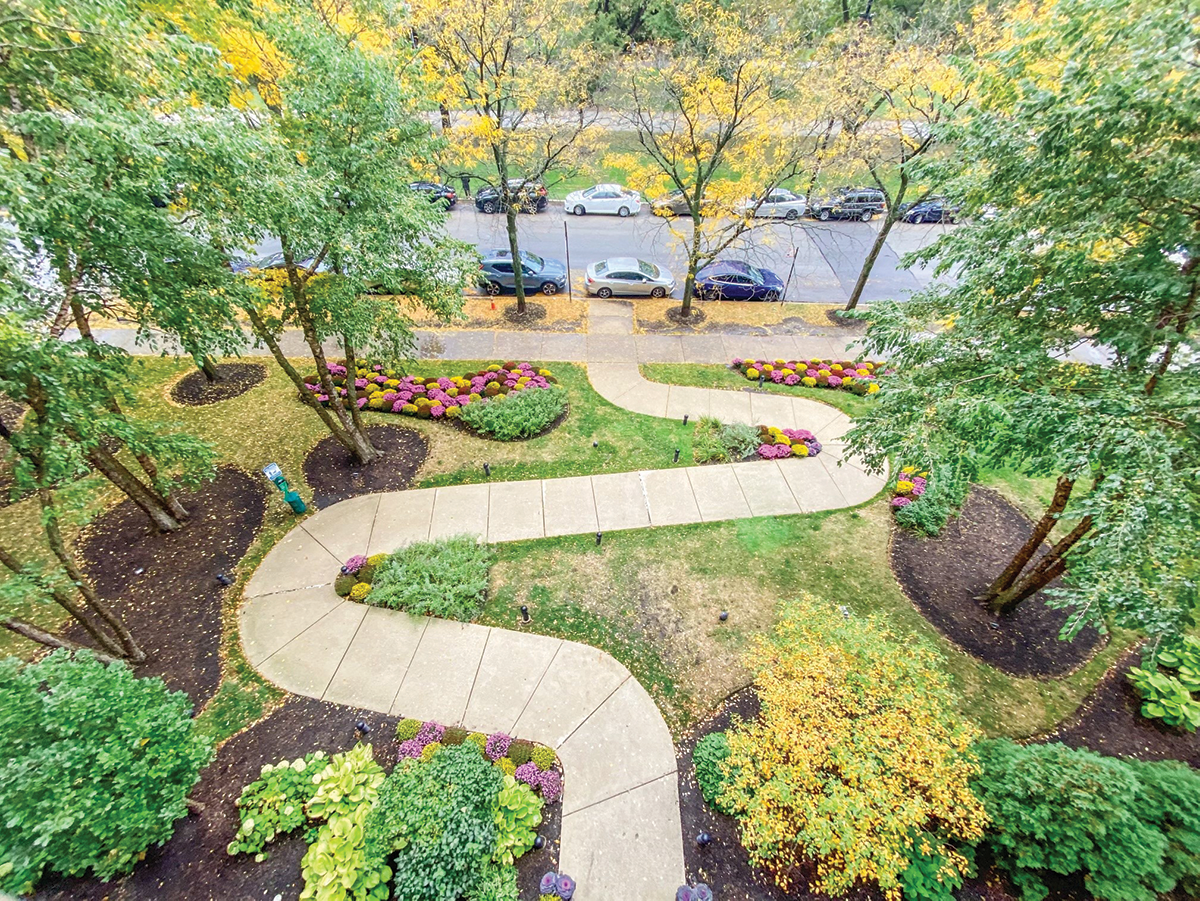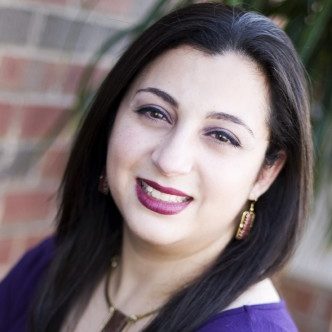As gardens grow, so do older adults and their communities
Every year, without fail, new growth emerges from the soil. When sprouts rise from gardens in spring and blossom into full-out glory in summer, it’s nothing short of magical.
Even in the concrete confines of the city or in the midst of suburban sprawl, individual and community gardens foster magic. And as gardens grow, so too do hope and healing.
Simply put, gardening is good for the body and the soul. In any year — but especially during the pandemic — gardening serves as a form of exercise and stress relief for people of all ages. It also offers a way to get outdoors and connect with something outside of yourself.
Jeremy Ohmes isn’t surprised to see a growing interest in gardening because he believes gardens can be a space for healing and connection. The Chicago master gardener is certified in horticultural therapy — a practice that uses gardening to address mental or physical issues — from the Chicago Botanic Garden’s horticultural therapy certificate program. Through his company Wild World Gardens, he provides therapeutic garden design and gardening programs that promote health.
“Gardening gives us health benefits — lowering your blood pressure, decreasing dementia risk — and it’s great for our well-being,” Ohmes says. “Especially for those later in life, the idea of having to be taken care of can be stressful. In horticultural therapy, and gardening in general, you’re the caretaker.”
Horticultural therapy and exposure to nature and gardens have positive benefits for seniors. Participating in horticultural therapy was associated with better immune functioning for older adults, according to a recent study published in The Journals of Gerontology: Series A.
The simple act of gardening provides a sense of purpose, pride, and a reciprocal relationship with nature. “Gardening directs your energy toward something that you can help, not only today but in the long term,” Ohmes says. “And when you care for a garden, the garden cares for you in return.”

Nurturing nature
When Carolyn Frazier, who lives in Chicago’s Old Irving Park neighborhood, looks at her backyard through her kitchen window in the spring, tulips and daffodils greet her. During the summer, roses, brown-eyed Susans, hibiscus, and other blooming flowers appear in her yard. When she’s in her garden space, Frazier isn’t thinking about work or stresses in her life. Instead, her garden fills her thoughts, making her feel happy.
“The garden obligations don’t stress me out,” she says. “They’re a welcome need.”
Frazier isn’t the only gardener in her family. Rather, she’s the shade gardener while her husband Duncan Moore is the sun gardener. Their garden also includes several abstract steel sculptures that her mother created. One in front of their home measures several feet tall.
When the pandemic hit, Frazier vowed to create a garden that was constantly blooming and to record that progress on Facebook. Last year, she posted her delights from spring through August.
“I love that aspect of it, that something is blooming all the time,” Frazier says. “It’s so beautiful. I can’t wait until the echinacea blooms, because it takes over. The same space changes all the time during the season.”
Frazier’s garden brings her a sense of calmness and purpose. “It is something bigger than you in the sense that you’re taking care of something,” she says. “You’re nurturing it. You’re watching it grow. You’re delighted when it does better than you expected.”
Even an activity like pruning brings Frazier joy.
“I absolutely love to prune because it’s very much about shaping and nurturing. Which branches do you cut, and which ones do you leave?”

Caring for the community
Gardening doesn’t have to happen at home. Some people don’t have the yard space; others don’t know where to start or have accessibility barriers to working their own garden. But they still have an interest.
Patricia Hart and her husband Robert, who are in their mid-60s, live in Chicago’s Austin neighborhood. Their home faced three vacant residential lots that had been used as a dumping ground, strewn with tires and other debris. When the vacant lots went up for sale, the couple bought them.
Immediately thereafter, they purchased two chain saws, rented a chipper, and invited friends, family, and neighbors to help them cut down 13 overgrown trees to make space for a community garden. They plan to open the Hart Peace Community Garden this summer and are working with designers to make the space accessible so all neighbors can enjoy it.
For the Harts, who were born and raised in Arkansas alongside sharecroppers, the love of gardening runs deep. “I’ve been gardening ever since I was probably 4 years old,” Hart says. She remembers her mother digging holes in the earth. Hart would count the seeds and tuck them into the soil, in the hopes of raising everything from greens to popcorn to sweet potatoes. “I just find it’s so peaceful,” she says.
With their community garden, they hope to ignite that same love and curiosity in their neighbors. Many parts of the South Side and West Side are food deserts, with a dearth of fresh food. Community gardens like the Hart Peace Community Garden help increase access to and knowledge of healthy options.
In planning their garden, the Harts thought about health in various ways, incorporating fruit and vegetable plants. “Especially in the Black community, many people have diabetes or high blood pressure,” Hart says. “I want to be able to teach people how to eat the correct way and not cook with a lot of meat.”
Many of Hart’s older neighbors have a disability, as do she and her husband, so accessibility was important in the design.
To design the garden, Hart enlisted the help of Human Scale, a nonprofit design group founded by University of Illinois at Chicago students. Among the design elements, Hart says, will be accessible planter stations, a pergola for shade, and meandering paved walkways for community residents to enjoy.
“They can walk around the path and get exercise, or they can sit there and they can talk. They can meditate, and they can find peace there,” she says.
To accommodate people in wheelchairs, there will be wide paths. Visitors are welcome to tend plants in the 4-foot by 8-foot raised beds, which will be high enough for them to reach if they’re in a wheelchair. People can grow what they want in the gardening beds at no cost other than a commitment to help out in the peace garden.
Hart wants her garden to be a safe space for community members. “We want them to get out here and talk to each other,” she says. Austin often makes the news because of negative events, but Hart hopes this new space will encourage her neighbors to come out and get to know each other better.
“We plan on having yoga and charity events, cooking seminars, some healthy eating classes,” she says. “We just want people to come out and network, instead of being in the house. Come to the garden, walk around, talk to other people in the neighborhood.”

Connecting with others
Hart isn’t the only one who wants to use her community garden to help older individuals find connection. That was one of the reasons Gina Jamison, 73, from Chicago’s Garfield Park neighborhood opted to transform her property into a community garden. The land has been in her family since 1947.
Jamison opened the gates to the Kuumba Tre-Ahm Community Garden in 2012, with 24 raised beds. She named her garden for the sixth principle of Kwanzaa — kuumba, or creativity — and her two grandsons, Trevon and Ahmari, because they were right there with her from the beginning, getting their hands dirty, planting carrots and broccoli, and playing with spiders and roly-poly bugs.
Since then, Jamison has opened six of the raised beds to first and fourth grade students from nearby Willa Cather Elementary School. Neighbors, from young families to those in their 70s, lease boxes for $25 per season, plus a $10 per month upkeep fee.
When the vacant lot on her block’s southwest corner became available through the city of Chicago’s large lot program, Jamison bought it and is transforming it into a permaculture garden — one that takes advantage of the local environment — with fruit trees, berries, flowers, bushes, and benches. She wants to create another space for community members to enjoy the outdoors.
Jamison says she loves that the garden is intergenerational. She relishes seeing people of various ages, races, and ethnicities engaging with the garden, taking their time to tend to their plants and learn from each other.
Some grow peppers, zucchini, or butternut squash; others grow herbs, such as basil, cumin, and oregano. One older gardener has taken it upon herself to teach others the benefits of growing and cooking with Swiss chard and cucumbers, which she grows in her raised bed; she also teaches about composting.
The garden is the most wonderful place in the whole wide world, Jamison says. “The last Sunday of every month is our garden work day — we prune, weed, water, do carpentry, whatever has to be done — and everyone brings something to eat. Afterward, we sit, and we talk. We talk about plans, what we’re going to do, and what we’ve been doing.”
Jamison is quick to point out that while she’s the one who started the garden, the community keeps it going. And that’s the part she loves most of all.
She enjoys having children in the garden, watching them learn where food comes from and about healthy eating. “These first and fourth graders, they’re our future,” Jamison says. “If you start eating healthy, you will have healthy bodies and healthy brains, and you will make healthy decisions. That’s how it works.”

Brookdale Lake Shore Drive
Promoting accessibility
Increasingly, senior living communities are recognizing the importance of gardening spaces, too. Many now incorporate gardens in their design, whether they are gardens designed for sitting or gardens set up for planting.
Residents at Brookdale Lake Shore Drive, a luxury high-rise senior living community across from Lincoln Park, enjoy a garden on the third-floor terrace that overlooks Lake Michigan. The space features individual planter boxes that residents manage.
The planters were custom built with accessibility in mind, says Erika Keegan, executive director of Brookdale Lake Shore Drive. And design touches make the terrace garden a place residents value. “Benches offer comfortable seating for reading, viewing, and sipping a cool beverage,” she says. “A gazebo on the north end offers shade from the sun.”
Residents can plant anything from vegetables to herbs to flowers with assistance from volunteer master gardeners.
When one resident moved into the community from her longtime home, it was important for her to keep her beautiful begonias.
“This resident always grew a yard full of begonias at home. When she transitioned to our community, she specifically picked an apartment that overlooked our garden terrace and a garden box directly in front of her window, so she could continue to plant and watch over her beautiful begonias from her living room,” Keegan says.
There is no doubt that exposure to nature and gardens have positive benefits for older adults, whether it’s time spent in their own backyard, a community garden, or a senior living center.
“Gardening brings people together,” Keegan says. “It celebrates growth and beauty.” And all over Chicago, plants and people are in bloom.







